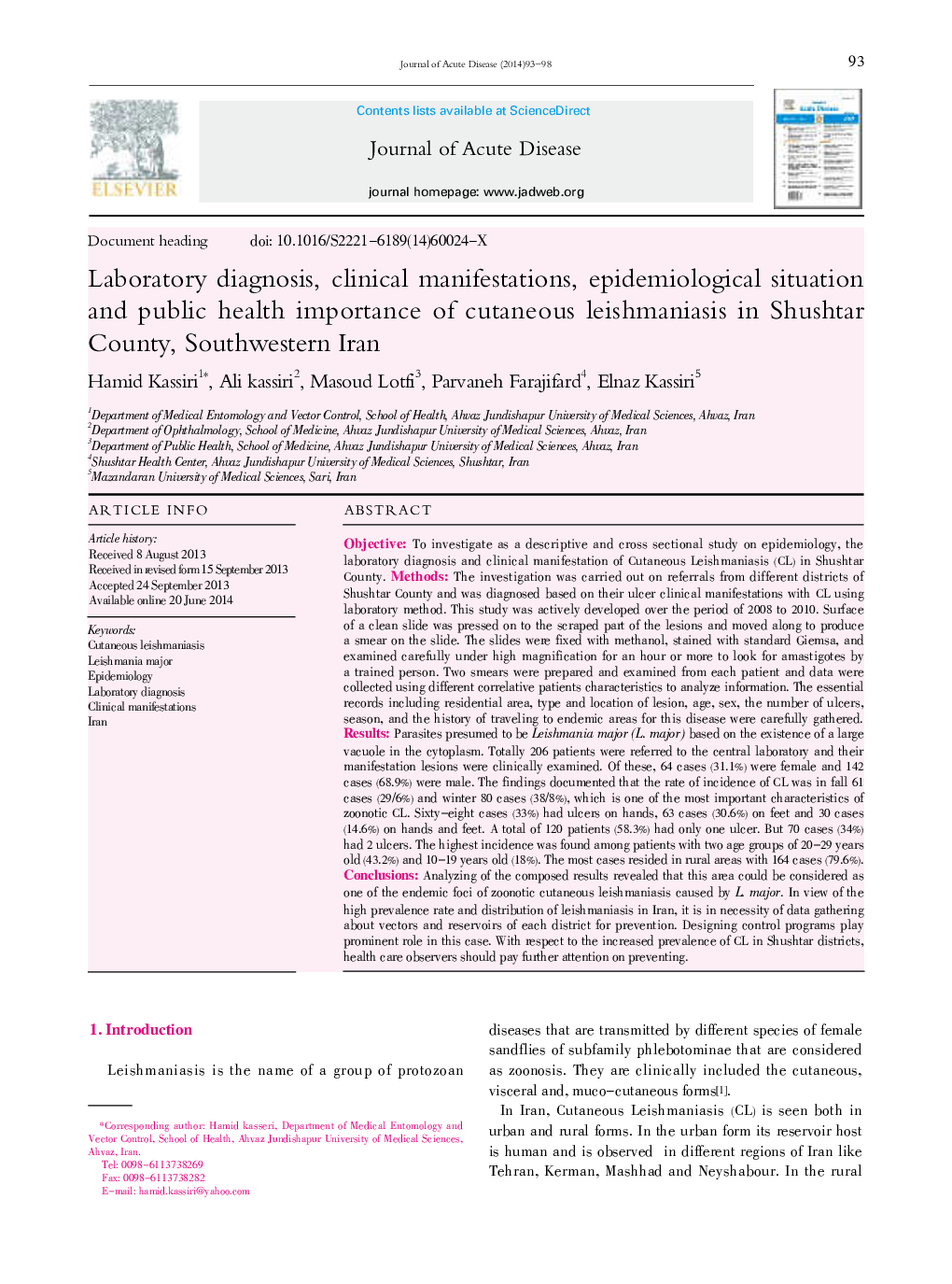| کد مقاله | کد نشریه | سال انتشار | مقاله انگلیسی | نسخه تمام متن |
|---|---|---|---|---|
| 3475268 | 1233188 | 2014 | 6 صفحه PDF | دانلود رایگان |
ObjectiveTo investigate as a descriptive and cross sectional study on epidemiology, the laboratory diagnosis and clinical manifestation of Cutaneous Leishmaniasis (CL) in Shushtar County.MethodsThe investigation was carried out on referrals from different districts of Shushtar County and was diagnosed based on their ulcer clinical manifestations with CL using laboratory method. This study was actively developed over the period of 2008 to 2010. Surface of a clean slide was pressed on to the scraped part of the lesions and moved along to produce a smear on the slide. The slides were fixed with methanol, stained with standard Giemsa, and examined carefully under high magnification for an hour or more to look for amastigotes by a trained person. Two smears were prepared and examined from each patient and data were collected using different correlative patients characteristics to analyze information. The essential records including residential area, type and location of lesion, age, sex, the number of ulcers, season, and the history of traveling to endemic areas for this disease were carefully gathered.ResultsParasites presumed to be Leishmania major (L. major) based on the existence of a large vacuole in the cytoplasm. Totally 206 patients were referred to the central laboratory and their manifestation lesions were clinically examined. Of these, 64 cases (31.1%) were female and 142 cases (68.9%) were male. The findings documented that the rate of incidence of CL was in fall 61 cases (29/6%) and winter 80 cases (38/8%), which is one of the most important characteristics of zoonotic CL. Sixty-eight cases (33%) had ulcers on hands, 63 cases (30.6%) on feet and 30 cases (14.6%) on hands and feet. A total of 120 patients (58.3%) had only one ulcer. But 70 cases (34%) had 2 ulcers. The highest incidence was found among patients with two age groups of 20-29 years old (43.2%) and 10-19 years old (18%). The most cases resided in rural areas with 164 cases (79.6%).ConclusionsAnalyzing of the composed results revealed that this area could be considered as one of the endemic foci of zoonotic cutaneous leishmaniasis caused by L. major. In view of the high prevalence rate and distribution of leishmaniasis in Iran, it is in necessity of data gathering about vectors and reservoirs of each district for prevention. Designing control programs play prominent role in this case. With respect to the increased prevalence of CL in Shushtar districts, health care observers should pay further attention on preventing.
Journal: Journal of Acute Disease - Volume 3, Issue 2, 2014, Pages 93-98
